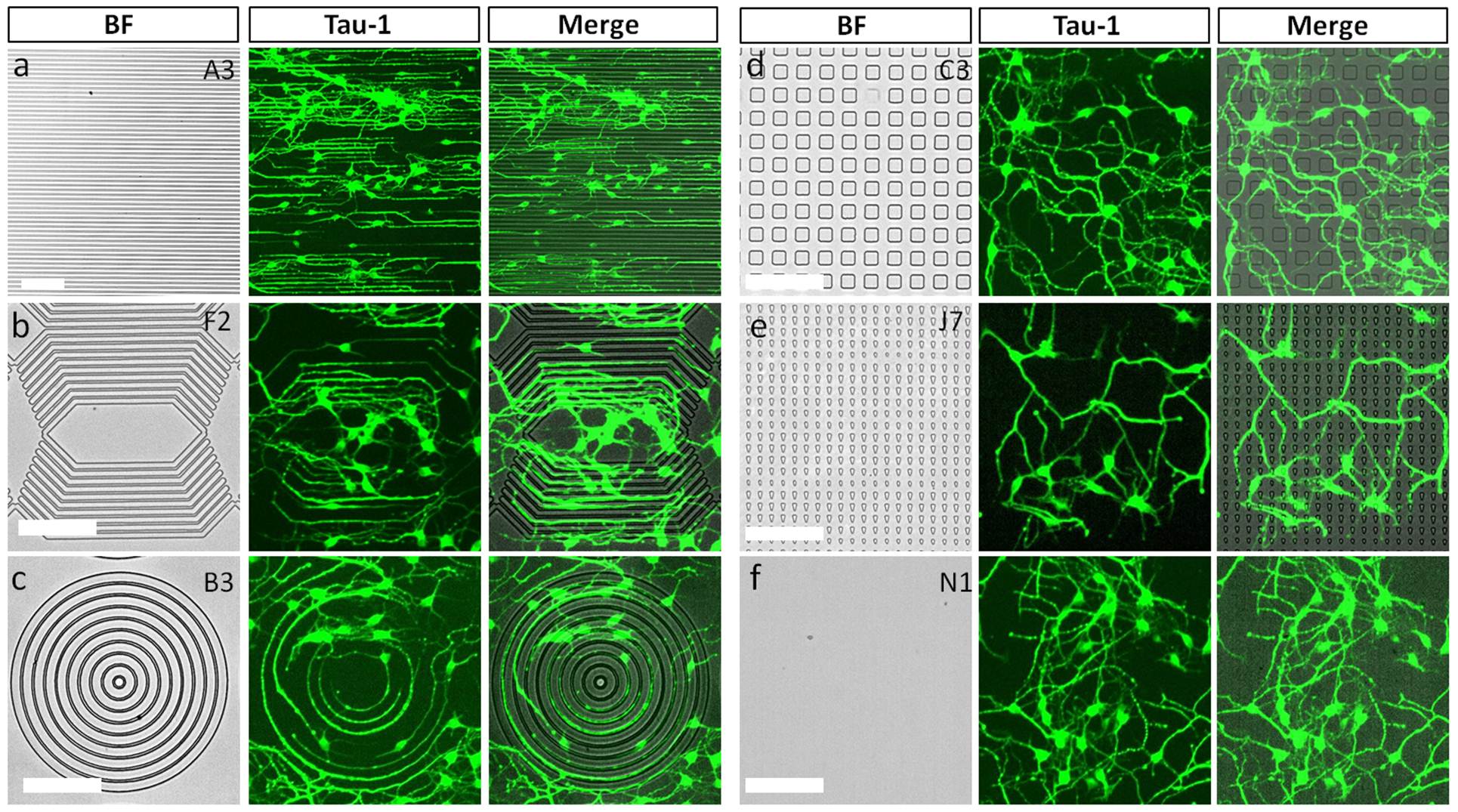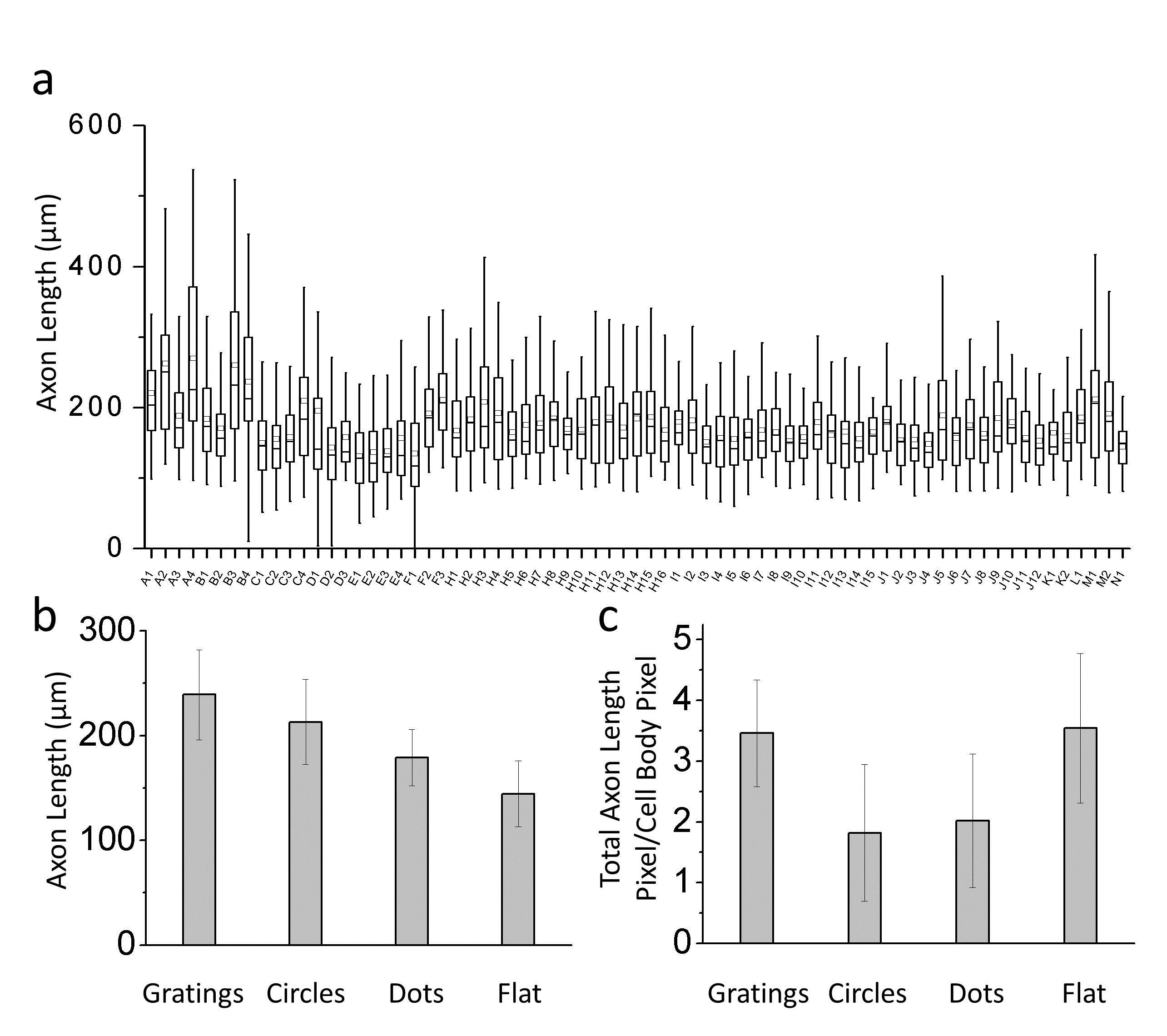| Members: | Dr. Peng Shi (MBE) - Project Leader
Prof. Stella W. Pang (EE) Dr. Yun W. Lam (BCH) Dr. Eddie Ma (BMS) Dr. Patrick Lee (SEE) |
A combinatorial approach was used to present primary neurons with a diverse set of topographical features in the form of micropatterned substrates. The topography chip was developed to enable high-throughput screening of physical neural-guidance cues that can effectively promote different aspects of neuronal development, including axon and dendritic outgrowth. Notably, the neuronal-guidance capability of specific features was automatically identified using a customized image processing software, thus significantly increasing the screening throughput with minimal subjective bias. The results from this work can be readily applied towards engineering novel biomaterials with precise surface topography that can serve as guidance conduits for neuro-regenerative applications. This novel topographical screening strategy combined with the automated software processing can also be used for in vitro high-throughput screening of chemical or genetic regulatory factors in cultured neurons.

Axonal outgrowth on different microscale topographical patterns including linear, angular, and circular gratings; dots, triangles, and flat surface. Scale bar: 100 µm.

Quantification and analysis of axonal outgrowth. (a) Average length of axons (N≥60) on all the patterns compared to those on flat surface. (b) Average axonal length and (c) value of total axon length pixel/ cell body pixel of neurons growing on gratings, circles, dots, and flat surface.
W. Li, Q. Y. Tang, A. D. Jadhav, A. Narang, W. X. Qian, P. Shi, and S. W. Pang, “Large-scale Topographical Screen for Investigation of Physical Neural-Guidance Cues”, Scientific Report 5, 8644 (2015).